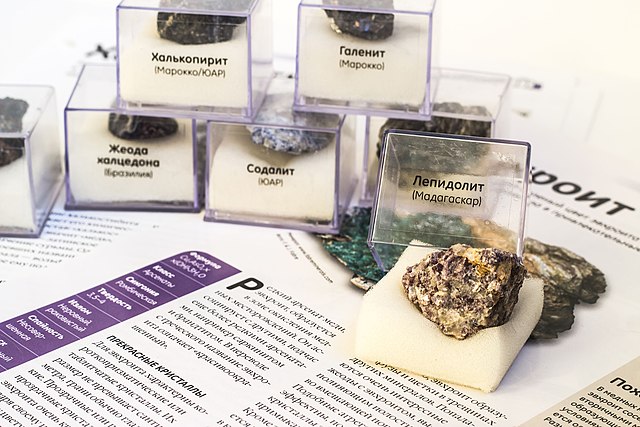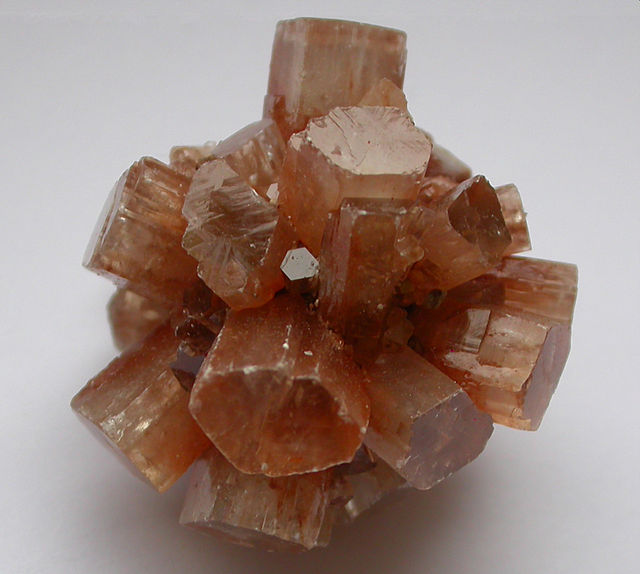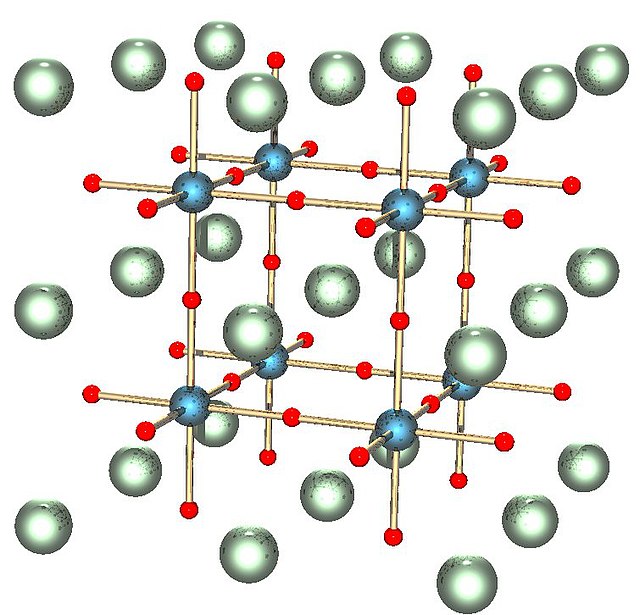Mineral collecting is the hobby of systematically collecting, identifying and displaying mineral specimens. Mineral collecting can also be a part of the profession of mineralogy and allied geologic specialties. Individual collectors often specialize in certain areas, for example collecting samples of several varieties of the mineral calcite from locations spread throughout a region or the world, or of minerals found in pegmatites.
A collection of identified rocks and minerals on display. The black stones on the left are obsidians; the lighter, hollow rocks are geodes.
A collection of smaller mineral samples stored and displayed in clear cases
Azurite specimen from the Morenci mine, Morenci, Arizona, USA. Morenci is the largest copper mine in North America, and Morenci copper mineral specimens are visually appealing, abundant, and relatively inexpensive.
Creedite specimen, 11 x 7 x 3 cm, from Santa Eulalia, Chihuahua, Mexico; formerly in the Perkins D. Sams collection
Mineralogy is a subject of geology specializing in the scientific study of the chemistry, crystal structure, and physical properties of minerals and mineralized artifacts. Specific studies within mineralogy include the processes of mineral origin and formation, classification of minerals, their geographical distribution, as well as their utilization.
Page from Treatise on mineralogy by Friedrich Mohs (1825)
Calcite is a carbonate mineral (CaCO3) with a rhombohedral crystal structure.
Aragonite is an orthorhombic polymorph of calcite.
The perovskite crystal structure. The most abundant mineral in the Earth, bridgmanite, has this structure. Its chemical formula is (Mg,Fe)SiO3; the red spheres are oxygen, the blue spheres silicon and the green spheres magnesium or iron.








